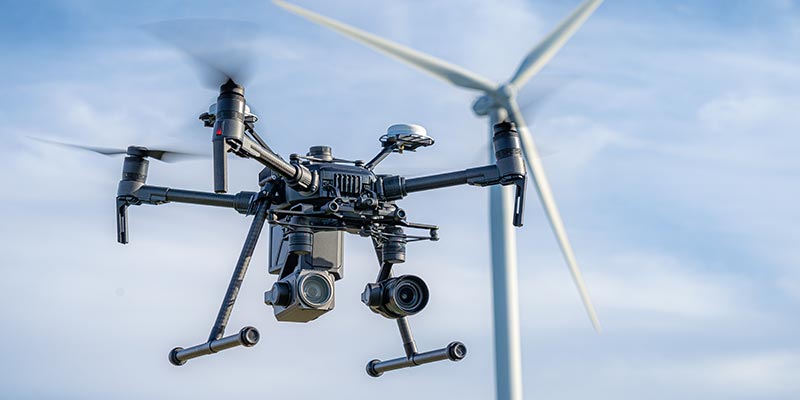
Safe Airframe Inspection using Multiple UAVs (SAFEMUV)
Improving the safety of autonomous unmanned aerial vehicle teams through the creation of a systematic robustness assessment process.
The challenge
Assuring the safety of teams of autonomous unmanned aerial vehicles (UAVs) that carry out a safety-critical inspection task collaboratively is hugely challenging. There are uncertainties and risks associated with the operating environment, individual UAV failures, an inconsistent global perspective between teams, interference because of limited physical space, and unreliable communication.
The research
This project will develop a process for a systematic robustness assessment of UAV teams. This will be underpinned by methods for the specification, generation and testing of collaborative inspection scenarios, enabling the progressive transition from simulation to lab-based operations and to real-world operations.
The progress
The team has carried out a comprehensive analysis of the state-of-practice in the assurance processes for UAV-based applications and developed the concept of operations needed for executing the safety analysis process of the SAFEMUV demonstrator.
The team performed a safety assessment of the airframe inspection operation with multiple UAVs and derived operational safety objectives by specialising the Specific Operation Risk Assessment (SORA) methodology proposed by JARUS. The assessment outcomes have been shared with the competent authorities and other project partners for consultation.
Significant progress has been made with integrating the system specification the team developed and the fuzzing technical components with the SAFEMUV simulator. This is a key achievement that amalgamates all technical work that has been carried out within the project, including safety analysis, system specification and simulation-based testing. The team can now launch intelligent fuzzing campaigns that enable assessing the resilience of the UAV team deployed in the airframe inspection mission.
The integrated tool-supported solution of SAFEMUV methodology has been enhanced by adding functionality that enables generating simulation worlds for testing and executing intelligent testing campaigns. Furthermore, the project team has started performing experiments in simulation to identify interesting scenarios and has also begun preparing the flight arena for the execution of those scenarios in the lab. The immediate next steps involve finalising the integration of SAFEMUV technical components and performing experiments for the SAFEMUV demonstrator in simulation and in the lab.
Papers and presentations
- Harbin, J., Gerasimou, S., Matragkas, N., Zolotas, T., Calinescu, R., and Alpizar Santana, M. "Model-driven design space exploration for multi-robot systems in simulation" in Software and Systems Modeling (2022).
- Harbin, J., Gerasimou, S., Matragkas, N., Zolotas, T., and Calinescu, R. "Model-driven simulation-based analysis for multi-robot systems" in ACM/IEEE 24th International Conference on Model Driven Engineering Languages and Systems (MODELS 21).
- Parra, S., Schneider, S., & Hochgeschwender, N. "Specifying QoS requirements and capabilities for component-based robot software" in 2021 IEEE/ACM 3rd International Workshop on Robotics Software Engineering (RoSE) (pp. 29-36). IEEE